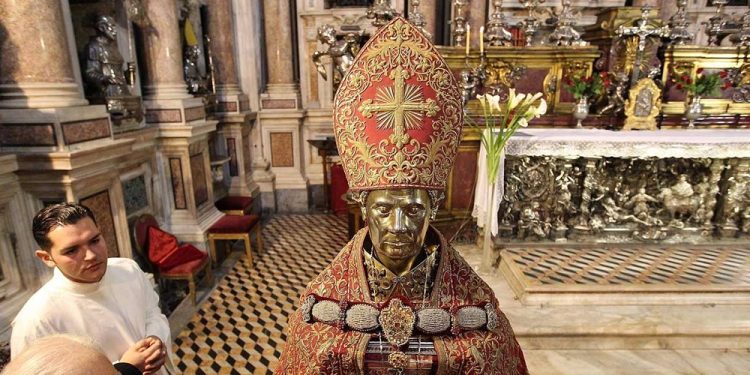
The Feast Of Saint Januarius
La Festa di San Gennaro, more commonly known as The Feast of Saint Januarius in English, is a public holiday observed annually in Naples every September 19th. It honors Januarius I of Benevento, a martyr and saint of the Catholic Church. Although this is a religious holiday observed with solemn religious services, it is also a public holiday observed by the general public.
It is a day off for many people, and it is a day on which schools, government offices, and some businesses are closed. It is also a day when devoted Catholics travel to Naples Cathedral to witness the liquefaction of St. Januarius’ blood.
The History of The Feast of Saint Januarius
According to tradition, St. Januarius, also known as San Gennaro, was born in Benevento, just northeast of Naples during the 3rd century. When he was only 15 years old, he became the priest at his local parish, and by 20 years of age, he had become the Bishop of Naples. During the persecutions of Diocletian in 305 CE, Saint Januarius was martyred while visiting imprisoned Christians in Rome. According to legend, a woman collected some of his blood and took it to Naples, where it liquefied after a period of eight days.
Observing The Feast of Saint Januarius
This holiday is an important holiday in Italy, especially in Naples. In this city, both locals and tourists come to the San Gennaro Festival to watch the liquefaction of St. Januarius’ blood. In the Chapel of the Treasure of San Gennaro, there are two sealed vials that contain the coagulated blood of the saint, kept in a silver reliquary.
According to tradition, if the blood does not liquefy, then it is a portent that foretells bad things such as famine or war. If the blood liquefies, then the Cardinal takes the blood through the cathedral and out into the square so that everyone can see it. He then returns the reliquary to the altar, and it stays on display for eight days.








